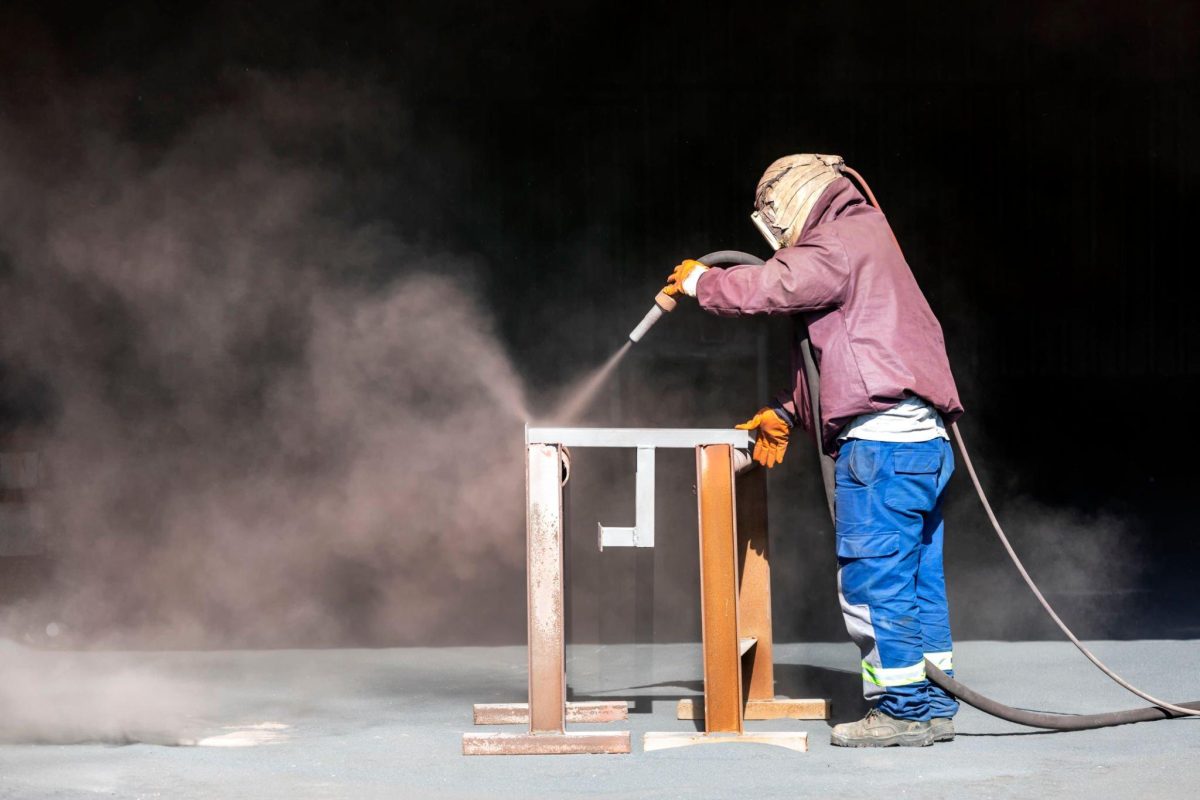If there is one thing we cannot ignore, it is a critical necessity to address the environmental consequences of diverse industrial operations. While grit blasting is a common approach, it has several ecological effects.
In this article, we will delve into the realm of grit blasting and look at the sustainable solutions utilised by sandblasting firms, that additionally protect the environment.
Why Adopt Eco-Friendly Sandblasting?
Consider a future where companies prosper without jeopardising our ecosystem’s delicate equilibrium. That is the aim of many businesses as they seek sustainable alternatives to established processes.
Grit blasting is a surface preparation technique that includes thrusting abrasive materials at high speeds to clean, polish, or reshape surfaces in sectors such as manufacturing and construction. However, it is critical to recognise the environmental consequences of this strategy.
The 10 Environmental Impacts of Grit Blasting
Here, we’ll explore some of the environmental impacts of onsite sandblasting caused by the misuse of abrasive materials.
- Air Quality Degradation
Onsite sandblasting produces airborne particles of abrasives and the substance being blasted. These particles may include dangerous compounds such as heavy metals, silica, and other hazardous elements that contribute to air pollution and are hazardous if breathed.
- Dust Emissions
The blasting process generates a significant amount of dust, which can spread over a large region and degrade local air quality. Wind can also carry fine dust particles to surrounding ecosystems and bodies of water.
- Noise Pollution
The onsite sandblasting equipment generates intense noise levels that annoy the surrounding inhabitants and wildlife. Prolonged exposure to such loudness might be harmful to one’s health.
- Water Contamination
Rainwater or runoff can wash away the particles created during grit blasting and any impurities existing on the surface being treated. This can contaminate nearby water bodies and soil, impacting aquatic life and posing human health concerns.
- Habitat Disruption
Grit blasting activities may occur in natural areas, damaging local ecosystems, habitats, and biodiversity. Grit blasting’s noise, vibrations, and chemical pollution can have a harmful influence on animal populations.
- Resources Depletion
Sand and garnet, the abrasive minerals used in grit blasting, are limited resources. Exploiting these minerals can potentially destroy habitats, change landscapes, and deplete vital resources.
- Energy Consumption
The operation of grit blasting equipment needs a substantial amount of energy. The demand for energy adds to greenhouse gas emissions, especially if the power is sourced from nonrenewable sources.
- Visual Impact
Grit-blasting activities can alter landscapes’ visual appearance, particularly in natural or picturesque locations. Unsightly equipment, dust clouds, and changed surfaces can reduce an area’s aesthetic value.
- Respiratory Health Risk
Workers in the grit blasting industry are exposed to airborne particles that can cause respiratory problems, such as silicosis, a lung disease caused by breathing crystalline silica dust. To mitigate these dangers, proper protective equipment and precautions are required.
- Long-Term Effects
Grit blasting’s environmental effects can have long-term consequences for ecosystems, air quality, and water bodies. Pollutants generated during blasting can linger in the environment, posing concerns even after blasting activities are completed.
Sustainable Alternatives Offered by Prostrip Sandblasting
Recognising the need for change, professional sandblasting firms are moving to environmentally friendly options that reduce environmental impact and improve efficiency. Prostrip Sandblasting, a well-known sandblasting firm in Melbourne, is one notable example of a company that has adopted creative approaches to improve environmental friendliness.
Prostrip Sandblasting has included various environmentally friendly measures in its operations, such as:
- Recycled Abrasives
Companies can use recycled abrasives derived from post-consumer or post-industrial waste instead of virgin abrasives. This lessens the need for fresh resources while also reducing waste creation.
- Water-Based Blasting
Water-based blasting methods clean surfaces by combining high-pressure water with abrasive particles on the onsite sandblasting. This drastically minimises the emission of airborne contaminants and removes health risks associated with dust.
- Soda Blasting
Baking soda (sodium bicarbonate) works well as a mild abrasive. It is biodegradable, less detrimental to the environment, and does not emit hazardous dust or residues.
- Robotic Blasting
Sandblasting with robotic devices can enhance precision and efficiency while eliminating the need for human intervention and minimises exposure to hazardous situations.
- Water Management and Recycling
Implementing proper waste segregation, recycling, and disposal techniques into onsite sandblasting operations for used abrasives and waste materials, is critical to lower overall environmental impact.
- Energy-Efficient Equipment
Using energy-efficient sandblasting equipment and gear can help to minimise the process’s energy consumption and greenhouse gas emissions.
- Localised Contamination System
Localised containment systems, such as enclosures or tents, can prevent the spread of airborne contaminants and abrasive materials into the environment.
- Alternative Energy Sources
Switching to renewable energy sources, such as solar or wind power, to power sandblasting operations may dramatically lower the company’s carbon footprint.
- Low VOC Coating
Encourage using low-volatile organic compound (VOC) coatings following onsite sandblasting to prevent air pollution and the discharge of hazardous chemicals into the environment.
- Education and Outreach
Companies that raise awareness about the necessity of sustainable practices in the sandblasting sector can contribute to environmental initiatives. Collaboration with local communities and participation in environmental efforts are examples of this.
Conclusion: Paving the Path to a Greener Future!
It’s stimulating to see enterprises like Prostrip Sandblasting leading the drive toward sustainable practices as we stand at the crossroads of industrial advancement and environmental responsibility. Grit blasting, which was long thought necessary for specific applications, may now be done with little environmental impact.
Onsite sandblasting companies can not only contribute to a healthier environment by using sustainable alternatives but also establish an example for other sectors to follow.
Remember that our decisions now influence the world we will live in tomorrow.

